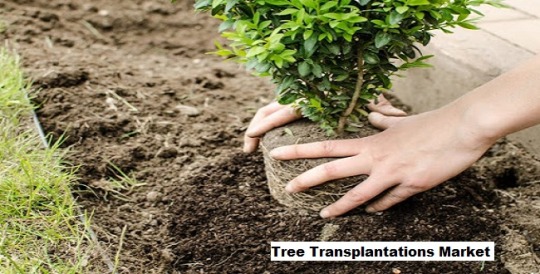#Transplantation Market Trends
Explore tagged Tumblr posts
Text
The global transplantation market size reached USD 17.3 Billion in 2024. Looking forward, IMARC Group expects the market to reach USD 35.7 Billion by 2033, exhibiting a growth rate (CAGR) of 7.97% during 2025-2033. The market is experiencing significant growth driven by rapid advancements in medical technologies, increasing prevalence of chronic diseases, rising initiatives by government and non-governmental organization (NGO) promoting organ donation, expansion of specialized transplantation centers, and the evolving healthcare policies and insurance coverage.
0 notes
Text
Transplantation Market Revenue Expected to Hit USD 38.2 Billion by 2032, Driven by a Notable 10.7% CAGR
Acumen Research and Consulting has recently published a research report on the Transplantation Market for the forecast period of 2023 – 2032, wherein, the global market has been analyzed and assessed in an extremely comprehensive manner. The research report on the Transplantation Marketx offers an extensive analysis of how the postoperative pain therapeutics landscape would evolve through…
#Transplantation Market#Transplantation Market Share#Transplantation Market Size#Transplantation Market Trends
0 notes
Text
Tree Transplantations Market 2028 By Size, Share, Trends, Growth, Forecast

Growing interest in horticulture & landscaping and rise in trend of creating green roofs in urban architecture is expected to drive the Global Tree Transplantations Market growth in the forecast period, 2024-2028.
According to TechSci Research report, “Tree Transplantations Market – Global Industry Size, Share, Trends, Competition Forecast & Opportunities, 2028”, the Global Tree Transplantations Market stood at USD 114.20 Million in 2022 and is anticipated to grow with a CAGR of 5.13% in the forecast period, 2024-2028. Several key drivers are propelling the growth of the Global Tree Transplantation Market. There is an increasing awareness of environmental conservation, leading to higher demand for tree transplantation services. Urbanization and infrastructural development often necessitate the removal and transplantation of trees to accommodate new structures while maintaining green cover.
Additionally, government policies and regulations to protect and sustain greenery, particularly in urban areas, also stimulate the market. Advancements in transplantation technologies, such as hydraulic tree spades and other specialized equipment, have made the process more efficient and successful, thereby bolstering the industry.
The Global Tree Transplantation Market encompasses a wide array of services and products that are intricately intertwined with the transplantation of trees. This includes, but is not limited to, state-of-the-art machinery for efficient tree removal and transport, innovative tree care products designed to ensure successful post-transplant growth, and expert consulting services that offer valuable insights and guidance on the best practices for tree transplantation.
Browse over XX market data Figures spread through XX Pages and an in-depth TOC on "Global Tree Transplantations Market.” https://www.techsciresearch.com/report/tree-transplantations-market/7733.html
Furthermore, within this expansive market, there is a myriad of specialized equipment available for various tree transplantation needs. For instance, advanced tree spades equipped with cutting-edge technology allow for precise and gentle removal of mature trees, minimizing stress and damage during the transplantation process. Additionally, there are specialized root pruning tools and tree anchoring systems that provide optimal support and stability to newly transplanted trees, aiding in their establishment and long-term survival.
Moreover, the Global Tree Transplantation Market caters to a diverse range of sectors, each with its own unique set of requirements and objectives. Urban developers, for instance, seek to create sustainable green spaces that not only enhance the aesthetics but also improve the overall quality of urban environments. Landscapers, on the other hand, focus on creating visually appealing outdoor spaces by carefully selecting and transplanting trees that complement the existing landscape. Governmental bodies are actively engaged in environmental conservation efforts and recognize the significant role that tree transplantation plays in mitigating the adverse effects of rapid urban expansion and climate change.
With its global reach, the market attracts key players and consumers from around the world, all united by a shared understanding of the crucial role tree preservation plays in combating the challenges posed by rapid urban expansion and climate change. This growing awareness has fueled the demand for tree transplantation solutions, making the Global Tree Transplantation Market a dynamic and thriving industry that continues to evolve and adapt to the changing needs of our planet.
As new technologies and innovations emerge, the market is poised for further growth, offering even more sophisticated and sustainable tree transplantation solutions to meet the diverse needs of its stakeholders. The Global Tree Transplantation Market is a comprehensive ecosystem that encompasses a wide range of services, products, and expertise. It caters to various sectors and is driven by the shared goal of preserving and enhancing the beauty, functionality, and environmental benefits of trees. With its global reach and continuous evolution, the market plays a vital role in addressing the challenges of urban expansion and climate change, making it an industry of utmost importance in the pursuit of a sustainable future.
The Global Tree Transplantations Market is segmented into component, type, trunk diameter, application, regional distribution, and company.
Based on application, in the Global Tree Transplantation Market, the Residential sector is emerging as the dominant force. This can be attributed to the ongoing trend of urbanization and the growing desire for green spaces within residential premises. As homeowners increasingly prioritize sustainability and aesthetics, the demand for tree transplantation in residential areas is experiencing substantial growth. This surge in demand can be attributed to the desire to create environmentally friendly and visually appealing living environments, where trees play a crucial role in enhancing the overall ambiance and contributing to a healthier ecosystem. With the Residential sector at the forefront, the Global Tree Transplantation Market is poised for continued expansion in the coming years.
Based on region, the North American region holds a dominant position in the global tree transplantation market due to several factors. Primarily, the region's robust infrastructure and advanced technology facilitate efficient and large-scale tree transplantations. The availability of state-of-the-art equipment and machinery enables precise and careful handling of trees during the transplantation process. Moreover, the strong environmental regulations and policies in place often necessitate tree transplantation during construction and development projects to mitigate the impact on existing ecosystems.
Additionally, there is a widespread public awareness and commitment to environmental conservation, leading to a high demand for tree transplantation services. This demand is further fueled by the growing recognition of the numerous environmental benefits that trees provide, such as carbon sequestration, air purification, and habitat creation. As a result, the North American region continues to witness steady growth in the tree transplantation market, with a diverse range of industries and organizations actively seeking out these services to enhance their sustainable practices and contribute to a greener future.
Major companies operating in Global Tree Transplantations Market are:
The Davey Tree Expert Company
Big John Manufacturing Co.
Damcon B.V.
MPG Machinery Production Group Inc. Co.
Xuzhou HCN Machinery Technology Co., Ltd
Bracke Forest AB (Fassi Group)
G K Machine, Inc.
Terrateck SAS
Vinca Horticulture & Landscape Private Limited
Mecas Facility Management Services
Download Free Sample Report https://www.techsciresearch.com/sample-report.aspx?cid=7733
Customers can also request for 10% free customization on this report.
“The future of the Global Tree Transplantation Market appears highly promising, with expectations of substantial growth in the coming years. This positive outlook is driven by several key factors. Firstly, there is a growing global awareness of the importance of environmental conservation and the need to preserve and enhance green spaces. This has led to an increased emphasis on urban landscaping and the integration of trees and greenery into urban areas.
Additionally, progressive construction practices that prioritize the preservation and transplantation of mature trees have gained traction, further driving the demand for tree transplantation services. Moreover, governmental initiatives and regulations promoting the creation of green spaces and sustainable development have provided a conducive environment for the growth of the tree transplantation sector. Furthermore, advancements in transplantation technology have significantly improved the efficiency and effectiveness of tree transplantation processes.
Innovations such as pneumatic digging systems and hydraulic tree spades have revolutionized the industry, making it easier and more efficient to transplant trees of various sizes and species. These technological advancements not only enhance the success rate of tree transplantation but also minimize the impact on the overall health and vitality of the transplanted trees. With all these factors combined, the Global Tree Transplantation Market is expected to witness remarkable expansion in the foreseeable future, presenting exciting opportunities for businesses and professionals operating in this sector.,” said Mr. Karan Chechi, Research Director with TechSci Research, a research-based management consulting firm.
“Tree Transplantations Market - Global Industry Size, Share, Trends, Opportunity, and Forecast, 2018-2028 Segmented By Component (Tree Spade, Tree Transplanter, Tree Pods & Tree Pod Trailers, Cranes, Tree Moving Accessories, Others), By Type (1-5 Row and 6-10 Row), By Trunk Diameter (3-6 inches, 7-10 inches, 11-14inches), By Application (Residential, Orchard, Forestry), By Region and Competition”, has evaluated the future growth potential of Global Tree Transplantations Market and provides statistics & information on market size, structure and future market growth. The report intends to provide cutting-edge market intelligence and help decision makers take sound investment decisions. Besides, the report also identifies and analyzes the emerging trends along with essential drivers, challenges, and opportunities in Global Tree Transplantations Market.
Browse Related Reports
United States Muriate of Potash (MOP) Market
United States Mycorrhizae Based Biofertilizers Market
United States Agritecture Market
Contact
TechSci Research LLC
420 Lexington Avenue, Suite 300,
New York, United States- 10170
Tel: +1-332-258-6602
Email: [email protected]
Website: www.techsciresearch.com
#Tree Transplantations Market#Tree Transplantations Market Size#Tree Transplantations Market Share#Tree Transplantations Market Trends#Tree Transplantations Market Growth
0 notes
Text
#Transplant Diagnostics Market#Transplant Diagnostics Market Trends#Transplant Diagnostics Market Growth#Transplant Diagnostics Market Industry#Transplant Diagnostics Market Research#Transplant Diagnostics Market Report
0 notes
Link
#market research future#hair transplant market size#hair transplant industry#hair transplant market trends#hair transplant surgery
0 notes
Text
Transplant Diagnostics Market is poised to grow at CAGR of 7.8 % by 2027. Factors driving the Transplant Diagnostics Market are rising number of organ transplant tests and funding for organ transplantation.
#transplant diagnostics market#transplant diagnostics market trends#transplant diagnostics market size#transplant diagnostics market share#heart transplant market trends#heart transplant market share#heart transplant market growth#transplant diagnostic market#organ transplant market size#organ transplant market growth#heart transplant market size#organ transplantation market
0 notes
Link
#adroit market research#transplant diagnostics market#transplant diagnostics 2020#transplant diagnostics trends
0 notes
Link
North America dominated the global transplant diagnostics market in 2018, however Asia Pacific is expected to grow at a highest pace through 2025...
#adroit market research#transplant diagnostics market#transplant diagnostics 2020#transplant diagnostics trends
0 notes
Text
Transplant Diagnostics Market Share, Growing Demand, and Top Key Players
The histocompatibility and immunogenetics of hematopoietic stem cells and organ transplantations are known as transplant diagnostics. These kinds of diagnostics aid medical personnel in figuring out whether potential organ receivers and donors will get along. Majorly transplant diagnostics are used in kidney transplants, heart transplants, and liver transplants.
What Diseases Cause a Kidney, Heart, and Liver Transplant?
Kidney Transplant A functional kidney from a live or deceased donor implanted into an individual whose kidneys are no longer functioning correctly is known as a kidney transplant.
When kidneys stop filtering effectively, dangerous amounts of fluid and waste build up in the body, raising blood pressure and leading to kidney failure.
The end-stage renal disease develops when the kidneys are only around 90% capable of performing their usual functions. The end-stage renal disease develops when the kidneys are only around 90% capable of performing their usual functions.
For Getting Sample Pages of This Report:-
End-stage kidney disease is frequently caused by:
Diabetes
Chronic, unrestrained high blood pressure
Chronic glomerulonephritis — eventual scarring and inflammation of the small filters
Polycystic kidney illness
Heart Transplant A condition known as end-stage heart failure occurs when the heart muscle fails miserably to pump blood throughout the body. It denotes the failure of alternative therapies. The last stage of heart failure is end-stage heart failure.
Heart failure, despite its name, does not indicate that the heart is ready to stop beating. Failure refers to the heart muscle's inability to circulate blood, generally due to injury, extreme weakness, or a combination of the two.
Heart failure has several reasons, such as:
Viral infection of the heart muscle
Heart attack
High blood pressure
Congenital
Pulmonary hypertension
Chronic lung illnesses, including COPD or emphysema
Alcoholism or drug abuse

#Transplant Diagnostics Market Applications#Transplant Diagnostics Market Trends#Transplant Diagnostics Market Size
0 notes
Link
0 notes
Text
Organ Transplant Rejection Medication Market to Grow with a 5.3% CAGR from 2023 to 2032, Expected to Reach USD 7.4 Billion by 2032
Acumen Research and Consulting has recently published a research report on the Organ Transplant Rejection Medication Market for the forecast period of 2023 – 2032, wherein, the global market has been analyzed and assessed in an extremely comprehensive manner. The research report on the Organ Transplant Rejection Medication Market offers an extensive analysis of how the postoperative pain…
#Organ Transplant Rejection Medication Market#Organ Transplant Rejection Medication Market Share#Organ Transplant Rejection Medication Market size#Organ Transplant Rejection Medication Market Trends
0 notes
Link
Adroit Market Research report on global transplant diagnostics market gives a holistic view of the market from 2015 to 2025, which includes factors such as market drivers, restraints, opportunities and challenges.
#adroit market research#transplant diagnostics market#transplant diagnostics 2020#transplant diagnostics trends
0 notes
Link
#market research future#hair transplant market size#hair transplant industry#hair transplant market trends#hair transplant surgery
0 notes
Text
TOP 10 BL Trends of 2023
This is just me with my analysis hat on.
1. 2023 = the year EVERYONE went outside their lanes
Everything went topsy-turvy this year in BL.
For example, Korea gave us agonized yearning and outright queerness (The 8th Sense, The New Employee) while Japan served up soft office workers and tender family (Our Dining Table).

The BL world went askew for a while, especially in the spring of 2023.
Not that we still didn’t still get Korea’s soft angsty bubbles or Japan’s “what are you doing and why does it hurt?” kink-fests. But there were quite a few BLs that made us chronic watchers sit up in confusion and wonder if Korea was dabbling in Taiwan’s territory or Japan in Thailand’s. Then they fudged the kisses and we were like... okay, back in familiar territory.
In contrast, Thailand stayed course-correcting for the damage they’ve done in the past with tropes (2022) and self referential meta criticism (2021), but also almost aggressively returned to their BL roots after last year’s series of shockers. Certainly, they are reexamining those roots, transplanting some, aerating others. But they really went back to classic Thai university and high school BL and pulps in a big way in 2023.
Taiwan is always difficult to gage because they produce so few but they seem to have stuck with what they do best with no deviation while producing more this year than they have in ages. I’m happy for that, why change a good thing? But there is a tiny part of me that really wants them to hit it out of the part with a quality piece soon. For me, We Best Love still reigns supreme, but I would really like the HIStory franchise to give us that level but longer - like a happy version of Your Name Engraved Herein. I think Taiwan has the chops to give us something as good as The 8th Sense or Old Fashion Cupcake but in their style, and I would like to see them exercise their talent for good rather than just profit.
I know, what a very odd thing for me to say. But if any BL is going to break into the mainstream American market, I genuinely think it’s most likely come from Taiwan.
Vietnam and the Philippines are falling behind, in general. They just didn’t bring out very many shows in 2023, and what the brought out tended to fub the endings. This is forgivable in Japan (because of their style and quality) but not what watchers want in the lower production value propositions. In other words, if you do a pulp, you can’t mess up the ending (by romance standards). that doesn’t look to be changing anytime soon.

2. The Office Romance Dominated
After years of Thailand serving us an endless (and slightly bland) buffet of university (and a few high school) BLs, this year Korea was basically like...
Ofiice. We like the Office. It’s cheap to film we can use grown up actors, acting (mostly) their actual age.
And yeah... it totally worked.
To be fair, Japan has always given us office live action yaoi from the beginning (they had the source material) but this year everyone else, including Thailand, seriously started playing in this setting.

3. Boys Danced with Boys
The darling @heretherebedork was a big fan of this one, and I rather like it myself. Prior to this boys dancing together was very very rare in BL, but this year we got way more than our fair share. It was lovely.
Never Let me Go
My School President
Bed Friend
The Day I Loved You
Step by Step
Be Mine Superstar
Tie the Not
Dangerous Romance
I think there were a few more. These are the ones I remembered to write down.
4. Getting (even more) Meta With Tropes
BL has been getting more and more meta over the past few years but this year they really focused in on tropes specifically. Calling out their own biggest and most favorite tropes in a massive way, especially Thailand and especially GMMTV.

Like they tunneled in on damaging tropes with Bad Buddy and the like over the past 2 years, and now they are just having fun with us.

I mean they just started the dancing trope and already they are calling it out? That’s like rapid-fire regurgitated meta there, GMMTV.

5. Cameos are the norm now
Taiwan has always loved cameos but in the past the other countries have been show and steady with only one or two a year. (Unless Japan does a parody.)
This year Korea got in on the game.
Korea rarely starts trends but they do adopt smaller and lesser known existing ones and make them super popular.
This year they did that with cameo couple appearances, even borrowing a few of Thailand’s pairs (TutorYim and MaxNat traveled north). They did it so much I stopped tracking. Love Class 2, Why R U?, and Jun & Jun were the heaviest hitters.

Taiwan, of course, came back swinging. Kiseki was the gum-ball machine of pair cameos. (In Taiwan mafia = gay.)
6. We are entering the cross pollination age
The number of remakes picked up or started this year was startling, not just countries revisiting their own content (Thailand, Japan) but countries revisiting OTHER countries stuff.


Lemme explain...
Korea has started remaking Thai content (Why R U?) alongside cameo'ing Thai pairs.
Thailand is doing Korean IP (My Dear Gagster Oppa) and has 2 Chinese ones slated for next year.
GMMTV acquired a lot of Japanese IP (Cherry Magic, Ossen, and My Love Mix Up) - and then had problems distributing it.
This is probably the most surprising trend for me. Especially the Japanese stuff. I would have thought these properties well outside of Thailand's price range (even GMMTV's) not to mention Japan’s legendary IP issues (I swear I typed this pout before the pulled TayNew’s excellent Cherry Magic).

Also why not option some of the older popular manga instead? Bet that's much cheeper. (I did see a NEW Thai translation of Finder into Thai, which is 90s yaoi, so I have my fingers crossed on that front.)
I shouldn't be too surprised.
Thailand is running out of y-novel content. Their publication industry is just not robust enough (I was just talking to a friend about this at length recently). But I didn't think they had the funds to option, especially from Japan.
Perhaps the option deals are for peanuts?
7. Korea got cheeky
I’m not sure quite how else to put this.

After finally figuring out boys can kiss, Korea started to do not just higher heat but playful higher heat, with more aggressive word play and linguistic innuendo, like they are entering their racy rom-com teenage years (Why R U? Love Class 2 and Jun & Jun in particular.)
I guess: Welcome to your BL teens, Korea?
It’s cute of them. I am very much enjoying it.
And now that comedy is warming them up, we get to see them play with actual queer burgeoning physicality in shows like The 8th Sense.
It’s nice. I like seeing Korea stretch its wings. They still stick to their bubble, but that bubble seems to be expanding.
8. The Amnesia Trope is back
And I, for one, would prefer to forget about it.
9. BL got trendy
I’m not quite sure how to articulate this category but basically we started seeing a lot of “modern” romance trends out of the west (like a/b/o) show up in our BL. Not a ton and sometimes quite small, but there has a been a steady rise of things like: no seme/uke, femme gay, out gay, condom use, messy gay.

We also got an increasing range of sub genre frameworks (like mafia, office setting) that’s moved BL pretty firmly (even in Thailand) out of school and into the workplace, whether actual working is involved or not.
It’s not to the point where it feels like we get more non-school BL than school BL (if I include all countries in this assessment).
Japan, in classic Japanese fashion, quietly started moving in the opposite direction. It’s what they do.

10. The Vampires are coming
This is an announcement trend, which I don’t usually report on but it’s so CLEAR.
So last year we had a spate of announcements of possible Omegaverse (2 from China, 1 from Japan, 1 from Thailand - the only one that’s happened).
This year we got 5 Vampire (or vampire-esk) Thai BLs announced including one from GMMTV.
Whether all 5 will actually get made is unlikely, but having had (basically) none prior to this (Kissable Lips), I’m pretty confident that we will get at least 2 of them. And I wouldn’t be surprised if at least one other country made one as well. (Side eyes Taiwan with interest.)

Final thoughts
It feels like we are also seeing a decline in BL (both by quantity and quality) from Vietnam and the Philippines. As you all know, I don’t track or really watch either of these two very closely. But it feels like, now, no one else is either.
I think we have likely seen the BL heyday already in both places and their industries are now on the decline.
We might be witnessing a thinning in the players in the BL field.
FYI we had approximately
136 BLs in 2023
Previous Years
2022: 117
2021: 95
2020: 62
2019: 40
2018: 30
2017: 44 (China’s last gasp)
2016: 27
2015: 17 (50% micro)
2014: 17 (50% micro)
And that’s it! Let me know in the comments if you’ve spotted any additional trends you want to call out.
Last year, 2022′s trend report
2021′s Trend report
Last Year’s Stats & Predictions
(source)
#bl 2023#bl trends 2023#film trends 2023#EVERYONE went outside their lanes#The 8th Sense#kroean bl#thai bl#The Office Romance Dominated#bed friend#Boys Danced with Boys#the day i loved you#Getting (even more) Meta With Tropes#hidden agenda#gmmtv#dinosaur love#love class 2#jun and jun#We are entering the cross pollination age#why r U?#Korea Got Cheeky#The Amnesia Trope is back#BL got trendy#The Vampires are coming
366 notes
·
View notes
Text
Finished Last Twilight, and I'm not adding to the ableism discourse, because most things have already been said and with a lot of beautiful nuance that I agree with. But I do want to talk about how that ending arrived because of Aof Noppharnach's consistent symbolic commentary on the experience of living with HIV in much of his work, with an approach that's unique among all queer content. Imma skip Gay OK Bangkok since its not even a metaphor there, but I'll explain my rationale for the others, and we can just appreciate the foundation Gay OK Bangkok lays for us to think about the rest of his stuff.
The motif of life-saving medical intervention comes up in all but one of the works he takes screenwriting credit on. He's Coming To Me: P'Med dies originally because of a lack of medical intervention. 1000 Stars: Tian gets a heart transplant. Moonlight Chicken: this one's more subtle, but the whole series is explicitly established in the context of reopening following the COVID pandemic, and Wen will later say to Jim, "we are survivors." It was this line upon rewatch that made me start considering how thorough this theme is. Survivors of what? The meaning is three-fold: hard lessons in love, COVID, and, for gay men of their age, the HIV epidemic. The hope of medical intervention for Day's condition takes on a secondary meaning, with this trend in mind, even if the mixed disability politics between visual impairment and being HIV positive really fails.
His comparisons are more intricate though. Pills and daily regimens are a consistent motif. Day has his daily eye-drops, Tian his pills (which are presumably immune-suppressants to help accept the transplant but I'm not going to Viki right now and watching every ep to find out so someone feel free to correct me). 'But people take medicine for lots of things,' you say. 'Just because its gay doesn't mean its an HIV metaphor!' You have a fair point! But here's where Aof gets real fun and sneaky. P'Med dies from lack of pills the same year Torfun, whose heart will save Tian's life, is born, 1997. I'm mentioned once before 1997 as important for the class-conscious Aof because of the Asian financial crisis that Thailand set off that year. However, 1997 is also important because its the year HAART, or Highly Active Anti-Retroviral Therapy was first used in Thailand (it had hit the market only one year earlier). HAART, a multi-drug regimen, boosted someone's life-expectancy with HIV up by 15 years, and its side-effects were significantly milder than previous approaches. The medical conditions of P'Med and Torfun's heart point us directly to HAART, and what it could offer.
Now we're moving out of the medical and into the experiential connections because, while Dark Blue Kiss is the only work Aof chose to take credit for screen-writing without incorporating medical references, it is by far the most dense with references to the issue of concealment. Its in the narrative as people closet identities and hide relationships, yes, but its in SO much of the visuals, too, most obviously the Pete & Kao mug hidden inside its coozie. It's easy to see the surface story about gay visibility and the closet, but there's a more specific subtext here about the associated condition that intensified the stigma of being gay and how that impacts your sense of self. Bad Buddy explores this issue less, but even in the BL Bubble, its haunted by the stigma of homophobia--it just shuffles it over onto rivalry so the audience can experience it without reproducing it.
However, the grief and shame of surviving when others haven't haunts Aof's other works much more intensely. Jim and Tian both are hung up on guilt for someone's death that they did not actually cause, continuing to pursue the goals for those that passed rather than their own. Then, there's Thun and P'Med, which is the best allegory for living and dating with HIV, bar none. It goes into the feelings of stigma and the limits of physical intimacy with partners that living with HIV caused, especially prior to Truvada's introduction in 2004. Even then, the show depicts how a HIV negative partner maintains the choice to participate in their own regimens, as Thun's desires for physical intimacy with P'Med manage their relationship and never the other way around.
This sense of required separation and gay identities that are less sex-focused also play into oft-maligned motifs in Aof's work. He's talked explicitly about people's criticisms of the limited physical intimacy in his earlier works that led to the more prominent stuff in Bad Buddy, but I hope given the above context, we can appreciate why physical intimacy is less of a priority than other kinds (and I'd add that 1000 Stars, which got the most sh*t about it, is actually one of the most erotically-charged BLs out there because of it's restraint). Then, you have the finales where characters separate for periods of time, and while I don't see this as explicitly tied to HIV experiences (Aof is literally following the book of romcom beats there, even if everyone whines about it), I can't help but appreciate a tangential connection to loving beyond time and distance that was required for those who lived with or lost loved ones to HIV.
I would've loved to see a version of Last Twilight that didn't absolutely bungle its metaphor, because it had every element to be something great (except, I'm sorry to the fans, lead actors with the necessary queer romantic chemistry). Watching the last episode, when the show seemed to finally rediscover plot and pacing, all the other pieces that had been drowned out by the disability conversation peeked their heads out, and I saw what the show wanted to be. The topics related to living with HIV of stigma, survivor's guilt, and assistive technologies: they were all right there, not just for Day but for everyone, if only they had been given the proper time to marinate to develop more complexity. It's the rare instance of a show where I'll choose to spend time imagining what could have been rather than obsessing over what was or just moving on. Even a misstep from Aof, like this, is overflowing with so many more layers than most series. The failures of Last Twilight, in relationship to his other works, even let you see how much food for thought he's providing.
#1000 stars#aof noppharnach#last twilight#he's coming to me meta#hctm#dark blue kiss#bad buddy#moonlight chicken#thank goodness we have heart from mlc where Aof doesn't try to fix him b/c deafness ESPECIALLY is a culture that's not tryna be 'saved'#also for anyone wondering i always say P'Med cuz I can't ever stop thinking of Ohm shouting it on the rooftop
48 notes
·
View notes
Text
prior to the silver foxes bred on prince edward island fur farms in 1895, blue foxes were farmed on islands in canada and alaska beginning in the late 1750′s. Although not nearly as profitable as the silver fox (a single pelt cost enough to equip a whole vessel), the industry favored natural black furs leading to the popularity of dark blue fox.

unlike the caged foxes of today, these fur farms operated by transplanting tens of breeding pairs of blue fox to foxless small islands, this way they couldn't breed with standard arctic foxes. at the harvest season the foxes would be lured into feeding houses where a trap door would fall behind them, where the ‘farmer’ would pick the best foxes to become breeders.

from the 1750′s to the late 1890′s this method was done with little to no human intervention. the foxes would be transplanted on the island, typically fed by boat or left to feed themselves, then be separated at harvest season. although this method was popular for it’s low-effort nature many foxes fought one another or suffered from overcrowding.
with the invention of silver fox ranches blue fox farmers started to live on the island with the foxes, often keeping the breeding foxes as pets even when they became barren. soon blue foxes began to be bred strategically for better color, temperament, and new mutations (such as the blue star featured on the right).

while this method was far better for the mental health of the animals who became very tamed and agreeable to live with (according to the farmers), the ecological effects of this method were staggering.
aside from the parvo & other communicable dieses this method suffered from there was considerable ecological devastation caused by releasing non-native carnivores to an island with no predators. sea bird populations adaptable to an island free of terrestrial carnivores had no way to protect their young. these foxes posed a major risk to all the animals on the islands, and is the reason this method of fur farming cannot be ethical.
due to poaching, changing fashion trends (both the crash of the fur market and the change to preferring white fur over black fur), and the overall preference for synthetic fibers made island fur farming unprofitable. both luxury and utilitarian furs lost their market value and farmers could no longer afford to feed their foxes and provide them medical care.
(all information and images collected from The Fur Farms of Alaska : Two Centuries of History and a Forgotten Stampede by Sarah Crawford Isto, 2012)
#fur farming#fur farm history#fashion history#animal agriculture#color morphs#really wanted to talk about this for a long time!#blue fox
13 notes
·
View notes